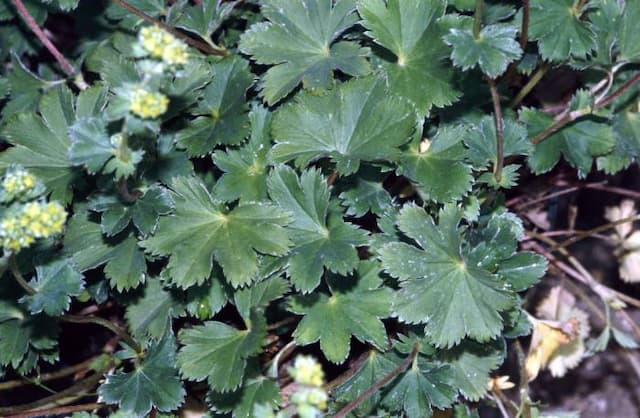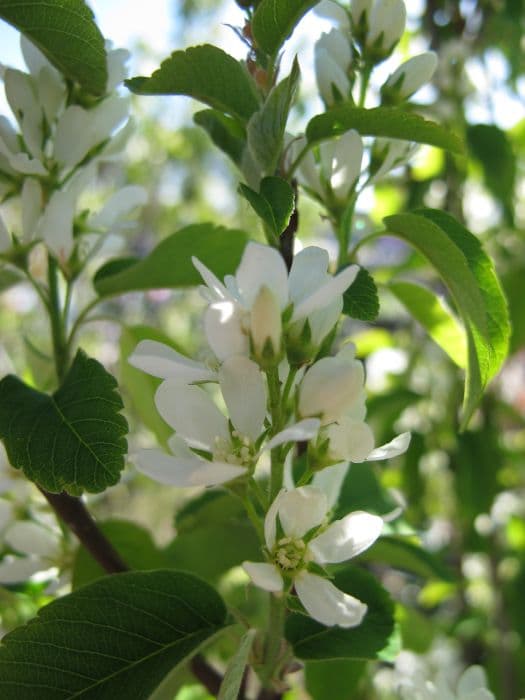Rosa Suffolk Rosa Suffolk = 'Kormixal' (S/gc)
![rose [Suffolk]](/_next/image?url=https%3A%2F%2Fplants-admin.emdemapps.com%2Fimages%2Fplants%2F%2Fimages%2F604b5f9452088.png&w=3840&q=75)
ABOUT
Rosa Suffolk, often referred to as a rose, is adorned with attractive blossoms that capture the eye and are a key feature of its appearance. The petals display a rich color palette, often appearing in vibrant shades that can range from soft pinks to deep crimsons, depending on the variety. These petals are velvety to the touch, with a classic, swirling arrangement that opens up from the tight, green bud at the center to reveal layer upon layer of delicate beauty. The blooms, depending on the specific type, can be single or double, with some varieties boasting a high petal count that gives the flowers a lush, full look. The leaves of the rose are typically a glossy, deep green, which creates a striking contrast against the softness of the petals. The foliage is commonly arranged in an alternate pattern along thorny stems, with each leaf being composed of smaller, oval-shaped leaflets that have serrated edges. Some varieties may have leaves that are tinged with hues of red or bronze. Despite the omission of size-related details, this rose, like others in its family, grows in a bushy form that often serves as an attractive addition to gardens and landscaping. The plant blooms recurrently over the season, providing a long-lasting display of color and fragrance. The rose's scent is just as varied as its appearance, with some having strong, sweet fragrances that are highly prized, while others may have little to no scent at all. Roses are used widely for ornamental purposes, cut flowers, and sometimes even for culinary and medicinal applications. This rose, with its striking visual appeal and potential for aroma, is considered by many enthusiasts to be a quintessential addition to any garden.
About this plant
 Names
NamesSynonyms
Suffolk Rose
Common names
Rosa 'Kormixal'.
 Toxicity
ToxicityTo humans
Roses (the common name for Rosa Suffolk = 'Kormixal') are not considered toxic to humans. Generally, they are safe when touched or ingested. However, it is important to note that roses can have thorns that may cause physical injury if not handled carefully. While the rose petals are sometimes used in culinary applications and can be eaten, ingesting large quantities of any plant material can potentially cause gastrointestinal discomfort or an allergic reaction in some individuals. Roses are not known for containing poisonous substances that lead to serious poisoning or severe health consequences in humans when ingested in typical amounts.
To pets
Roses are not toxic to pets. The common rose plant, including the variety Rosa Suffolk = 'Kormixal', does not contain any substances that are known to be poisonous to dogs, cats, or other domestic animals. However, the thorns on rose bushes can cause injury to pets, and ingesting a significant amount of rose plant material, like leaves or stems, might result in mild gastrointestinal upset due to the plant's fibrous nature. This can manifest as symptoms such as vomiting or diarrhea in pets but typically does not lead to serious illness. It's always a good practice to keep an eye on pets when they are near plants, even non-toxic ones, to prevent any accidental injuries or gastrointestinal issues.
 Characteristics
CharacteristicsLife cycle
Perennials
Foliage type
Deciduous
Color of leaves
Green
Flower color
Pink
Height
2-3 feet (60-90 cm)
Spread
2-3 feet (60-90 cm)
Plant type
Shrub
Hardiness zones
5-9
Native area
Cultivar
Benefits
 General Benefits
General Benefits- Enhances Garden Aesthetics: The Rosa Suffolk adds a touch of elegance and beauty to gardens with its vibrant blooms and lush foliage.
- Attracts Pollinators: The fragrant flowers attract bees, butterflies, and other beneficial pollinators that aid in the garden's ecological health.
- Versatility in Landscaping: Suitable for use in borders, beds, and as a specimen plant, providing flexibility in garden design.
- Seasonal Interest: Offers visual interest throughout its flowering season and can provide color from spring to fall depending on the climate.
- Cut Flowers: Excellent for cutting and use in floral arrangements thanks to its attractive blooms and long vase life.
- Ease of Care: Known for being relatively easy to care for, requiring standard rose maintenance such as pruning and occasional feeding.
- Drought Tolerance: Once established, it has a degree of drought tolerance, making it suitable for gardens in drier climates.
- Cold Hardy: Capable of surviving in colder climates, which makes it a good choice for gardeners in many regions.
 Medical Properties
Medical Properties- This plant is not used for medical purposes.
 Air-purifying Qualities
Air-purifying QualitiesThis plant is not specifically known for air purifying qualities.
 Other Uses
Other Uses- The petals of the rose can be used to make natural dyes for fabric and art projects, giving a delicate pink hue to the materials.
- Rosehips, the fruit of the rose plant, can be transformed into beads and used in jewelry making after being dried and pierced.
- When dried, rose petals can serve as an ingredient in homemade potpourris, imparting a floral scent to rooms and drawers.
- Rose flowers can be used to make rose water, which is a flavorful addition to desserts, pastries, and some savory dishes.
- Distilled rose oil from the petals is incorporated in perfumery to create luxurious scents and in aromatherapy for relaxation.
- Rose petals are a unique addition to salads, providing an edible decoration that adds color and a light flavor to the dish.
- As a natural source of pectin, rosehips can be used in preparing jams, jellies, and marmalades.
- Pressed rose petals create artistic and romantic embellishments for handmade paper and bookmarks or for floral resin crafts.
- Used as a natural confetti, biodegradable and more eco-friendly, rose petals are perfect for celebrations like weddings.
- In some cultures, rose petals are incorporated into ceremonial practices and religious offerings due to their beauty and scent.
Interesting Facts
 Feng Shui
Feng ShuiThe rose is often used in Feng Shui to promote love, happiness, and positive chi. To utilize the rose according to Feng Shui principles, you could place pink roses in the southwest corner of your garden or home to enhance love and romance or in the living room to create a welcoming environment and attract good energy.
 Zodiac Sign Compitability
Zodiac Sign CompitabilityThe rose is not used in astrology practice.
 Plant Symbolism
Plant Symbolism- Love: As a member of the rose family, the Rosa Suffolk symbolizes love, often suggesting deep affection and romantic emotions.
- Beauty: The rose is widely recognized for its beauty, representing an appreciation of elegance and aesthetics.
- Honor: Presenting someone with a rose can be a symbol of respect and esteem, acknowledging their worthiness of high regard.
- Devotion: Roses often signify a steadfast dedication to a person or cause, embodying loyalty and fidelity.
- Passion: Particularly red roses, like Rosa Suffolk, are associated with intense passion and desire, making them a classic symbol of romantic love.
- Mystery: The complex layers of rose petals can signify secrets and the unknown, hinting at a depth of feelings or hidden truths.
 Water
WaterSuffolk Rose should be watered deeply yet infrequently to encourage strong root growth. Generally, this means about 1-2 gallons per week for established plants, but this may increase to 2-4 gallons during very hot or dry conditions. Ensure the soil is dry to the touch at a depth of about 2 inches before watering again to prevent overwatering. Water early in the morning to allow foliage to dry out during the day, which helps prevent fungal diseases.
 Light
LightSuffolk Rose prefers full sun conditions, ideally receiving at least six to eight hours of direct sunlight each day. The best spot for planting is an area with unobstructed sunlight, away from shadows cast by buildings or trees. Adequate sunlight is essential for robust growth and blooming.
 Temperature
TemperatureSuffolk Rose thrives in a temperature range between 65 to 75 degrees Fahrenheit but can tolerate temperatures as high as 90 degrees and as low as 32 degrees Fahrenheit. To promote flowering, the ideal temperature should be on the warmer side of this range during the day and a bit cooler at night.
 Pruning
PruningPrune the Suffolk Rose to remove dead or diseased wood, shape the plant, and encourage new growth, which results in more blooms. The best time to prune is in late winter or early spring before new growth begins. Prune about one-third of the plant, cutting back to outward-facing buds to open up the plant's center for better air circulation.
 Cleaning
CleaningAs needed
 Soil
SoilFor the Suffolk Rose ('Kormixal'), a well-draining soil mix of two parts loam, one part peat moss, and one part sand or perlite is ideal. The soil pH should be slightly acidic to neutral, ranging from 6.0 to 7.0.
 Repotting
RepottingSuffolk Roses ('Kormixal') rarely need repotting and are typically planted in the ground. However, if grown in containers, they should be repotted when they outgrow their pots or every 2 to 3 years.
 Humidity & Misting
Humidity & MistingSuffolk Roses ('Kormixal') thrive at average outdoor humidity levels, between 40% to 60%. They are adaptable to the humidity levels found in most garden environments.
 Suitable locations
Suitable locationsIndoor
Plant in a bright spot with moderate watering.
Outdoor
Full sun, fertile soil, regular watering, annual pruning.
Hardiness zone
5-9 USDA
 Life cycle
Life cycleThe common name for Rosa Suffolk 'Kormixal' is Suffolk Rose. The life stages of this plant begin with seed germination, which occurs when conditions are warm and moist, leading to the emergence of small seedlings. As the seedlings grow, they develop a root system and foliar growth, entering the vegetative stage where they focus on photosynthesis and growth. After establishing a mature root system and foliage, the Suffolk Rose enters the flowering stage, producing buds that blossom into the characteristic roses. Upon pollination, these flowers can produce fruits, known as rose hips, which contain seeds for reproduction. Eventually, the plant may enter a period of dormancy, especially in colder climates, where it conserves energy before restarting the cycle with the return of favorable growing conditions.
 Propogation
PropogationPropogation time
Spring-Early Summer
The Rosa Suffolk, commonly known as 'Kormixal', is a variety of rose that can be propagated by cuttings, which is the most popular method for this plant. The ideal time for taking cuttings for propagation is during late winter or early spring before the new growth begins. A healthy, non-flowering stem about 6 to 8 inches (15 to 20 cm) long is selected, typically from the current or previous year's growth. The bottom end is cut just below a node, and the leaves are removed from the lower half to reduce moisture loss. The cut end can be dipped in rooting hormone to encourage root development and then planted in a mixture of peat and perlite or sandy soil. The cutting should be kept in a warm, humid environment with indirect sunlight until roots have developed, which typically takes several weeks after which it can be moved to a more permanent location.









